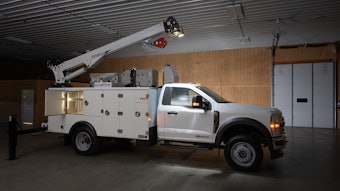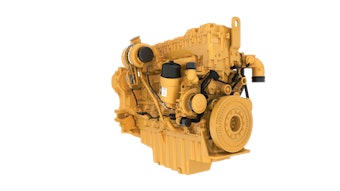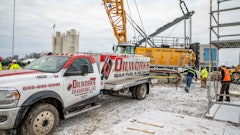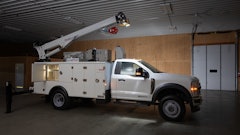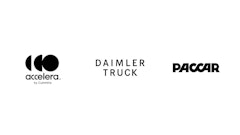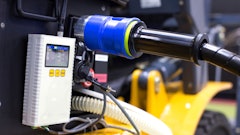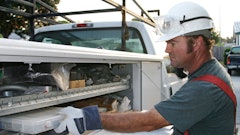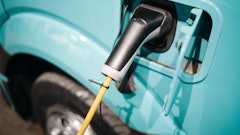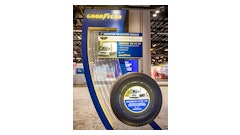
By Steve Spata, Technical Assistance Director, NTEA
Each year, pickup box removal occurs on tens of thousands of new pickup trucks when the OEM pickup box is removed and replaced with a vocational truck body. While this may seem straightforward — just swap one body for another — the pickup box plays an important role in the original vehicle’s safety and emissions compliance that cannot be assumed as carryover to another body, regardless of size or shape.
Those who perform box removal on a new truck (prior to being licensed and titled in a given state or sold and delivered to a purchaser at the first retail level in a province or territory) are alterers and own responsibility to represent vehicle compliance with applicable Federal or Canadian Motor Vehicle Safety Standards (F/CMVSS) and relevant emissions requirements — by performing these operations as an OEM franchised dealer, truck equipment upfitter or vehicle modifier, etc. It’s important to note, dealers are prohibited from selling vehicles that aren’t compliant with all applicable F/CMVSS and certified to that effect, which includes sales of trucks altered by pickup box removal, regardless of whether or not the dealer performs the work. Therefore, dealers need to be knowledgeable of which pickup models are represented by the respective OEMs as being capable of box removal in order to properly guide customers. Working with knowledgeable upfitters is also critical to dealers in their efforts to ensure the sale of compliant vehicles.
Models offered in OEM box removal guidelines and body builder materials have undergone testing and analysis to support those representations. So, understanding what is behind this information is important with respect to OEM box removal offerings and why it’s critical to stay within their limitations. In particular, pickup models with a gross vehicle weight rating (GVWR) of 10,000 pounds or less must meet more F/CMVSS than their 10,000 pound-plus GVWR counterparts, so more limitations must be reviewed and addressed.
Weight is a major contributor to standards performance. A heavy body will likely have more difficulty meeting different aspects of weight limitations in OEM box removal requirements. For example, weight affects the way a vehicle manages energy in a crash, so results of dynamic tests that evaluate occupant protection in frontal, side and rollover events, as well as fuel system integrity, are affected. Brake system performance is also heavily influenced by weight and its distribution in the vehicle. Additionally, more weight negatively affects vehicle emissions, and typical box removal operations result in a vehicle that’s heavier than the original pickup.
Accordingly, conformity to the following standards should be reviewed. These include, but are not limited to
- F/CMVSS 105: Hydraulic and Electric Brakes
- F/CMVSS 108: Lamps, Reflective Devices and Associated Equipment
- F/CMVSS 111: Rearview Mirrors and Rear Visibility Systems
- F/CMVSS 126: Electronic Stability Control Systems
- F/CMVSS 204: Steering Control Rearward Displacement
- F/CMVSS 208: Occupant Crash Protection (in Frontal Impacts)
- F/CMVSS 212: Windshield Mounting
- F/CMVSS 214: Side Impact Protection
- FMVSS 216a: Roof Crush Resistance
- F/CMVSS 219: Windshield Zone Intrusion (upgraded)
- F/CMVSS 301: Fuel System Integrity
Purchase a Truck that Allows Box Removal
There are numerous upfront considerations to make during the purchase process before proceeding with box removal of a particular make/model/model year pickup.
First, check to see if the vehicle make/model is part of the OEM pickup box removal offering for that model year. If not, there is no reason to continue with that specific model, and attention can shift to evaluating a model offered under pickup box removal guidelines.
After narrowing your scope to models included in OEM offerings, the next step would be to review weight and other limitations and guidance for that specific model, and compare to the desired upfit vehicle. In particular, maximum unloaded vehicle weight (max UVW) limits are a good initial evaluation. For example, if the OEM max UVW for the model you’re considering is 7,500 pounds and you determine from a simple calculation that the unloaded weight of the vehicle with the new body and equipment would be 7,000 pounds, you can continue evaluating suitability of that model for the customer. However, note there may be a different limiting unloaded vehicle weight for emissions compliance, so you’ll want to review those conditions before proceeding.
Other straightforward limits can include maximum weights and center of gravity location of the proposed body to determine if it’s within applicable OEM limits. A weight analysis should be performed to evaluate vertical and lateral center of gravity position limitations for the overall vehicle, as well as distribution of weight front-to-rear and side-to-side. Frontal area limits, including added body and equipment, must also be evaluated. Increasing frontal area creates a negative effect on emissions, and most box removals increase frontal area where the body extends outward beyond the OEM cab as compared to the original pickup. The new configuration must be within the maximum square footage allowed.
It’s helpful to think of these OEM limitations as a go/no-go step in the process of evaluating the upfit. Or, more proactively, they could be viewed as a means of narrowing body selection to those that check easier boxes for a given set of pickup chassis limitations.
Unfortunately, the considerations don’t end here. There are vehicle and build limitations that can be specific to a given chassis. Common issues encountered with box removal include
- Adapting rear lighting of a specific body, which may involve reprogramming a lighting module on the chassis in order to eliminate a “fast flash” condition.
- Relocating or replacing the OEM rear vision camera.
- Procuring the OEM fuel fill kit designed for that model, which also includes components to properly route the filler neck to the designated fuel door location in the body.
Additionally, there may be specific methods of attaching the body to the pickup chassis. These issues relate directly to compliance with certain F/CMVSS and emissions regulations, so thinking through these build-related items is another aspect of upfront box removal considerations.
While there are several layers to evaluate in determining if an off-the-lot pickup model can be a suitable chassis for a particular vocational body and upfit, some body manufacturers offer tools that can help streamline this process. Starting with the body and upfit, they have performed engineering to determine which pickup brands/models are suitable from OEM box removal offerings and guidance. This approach helps prevent the wrong base vehicle from being selected, or the vocational upfit from being compromised due to limitations of the original pickup.
